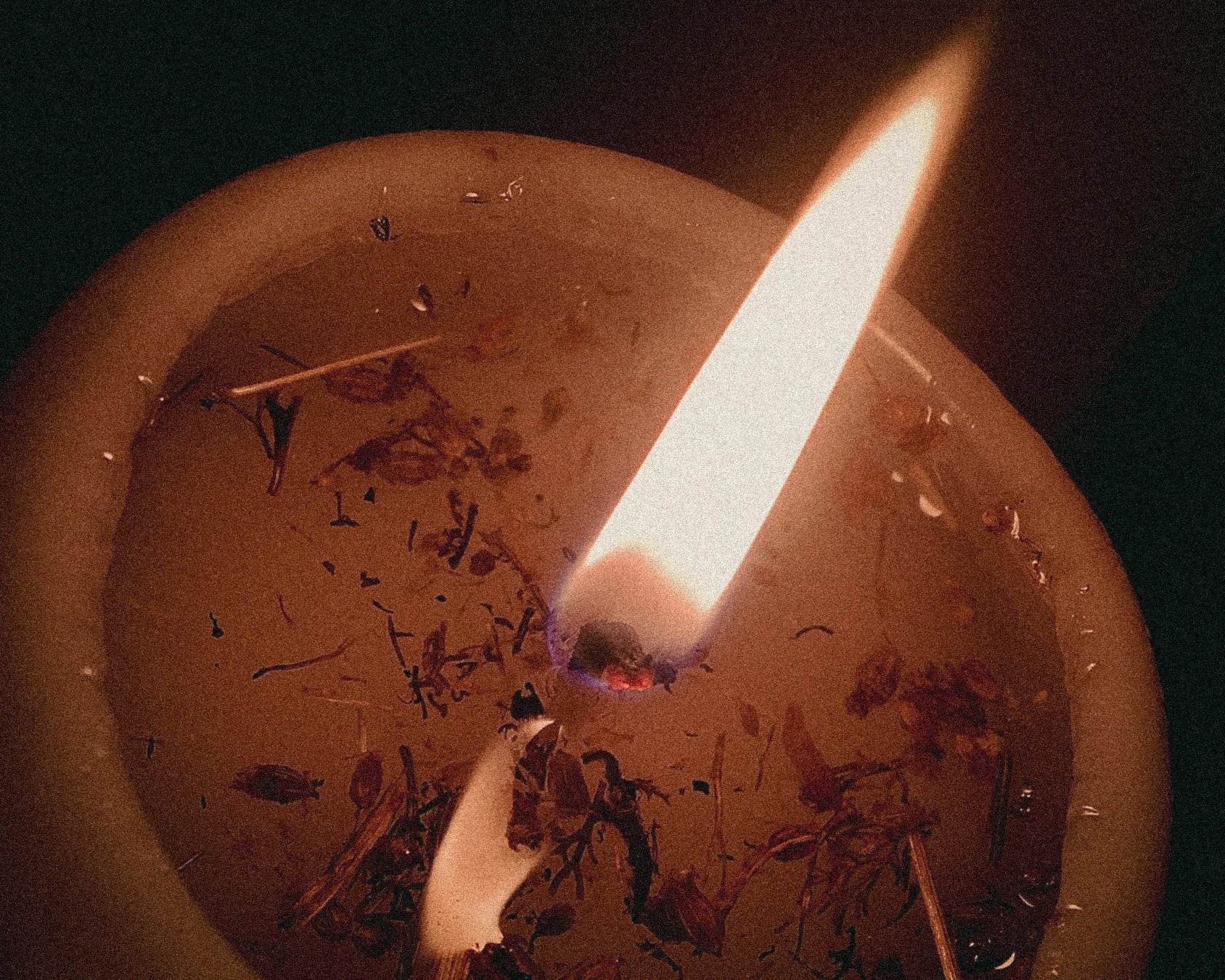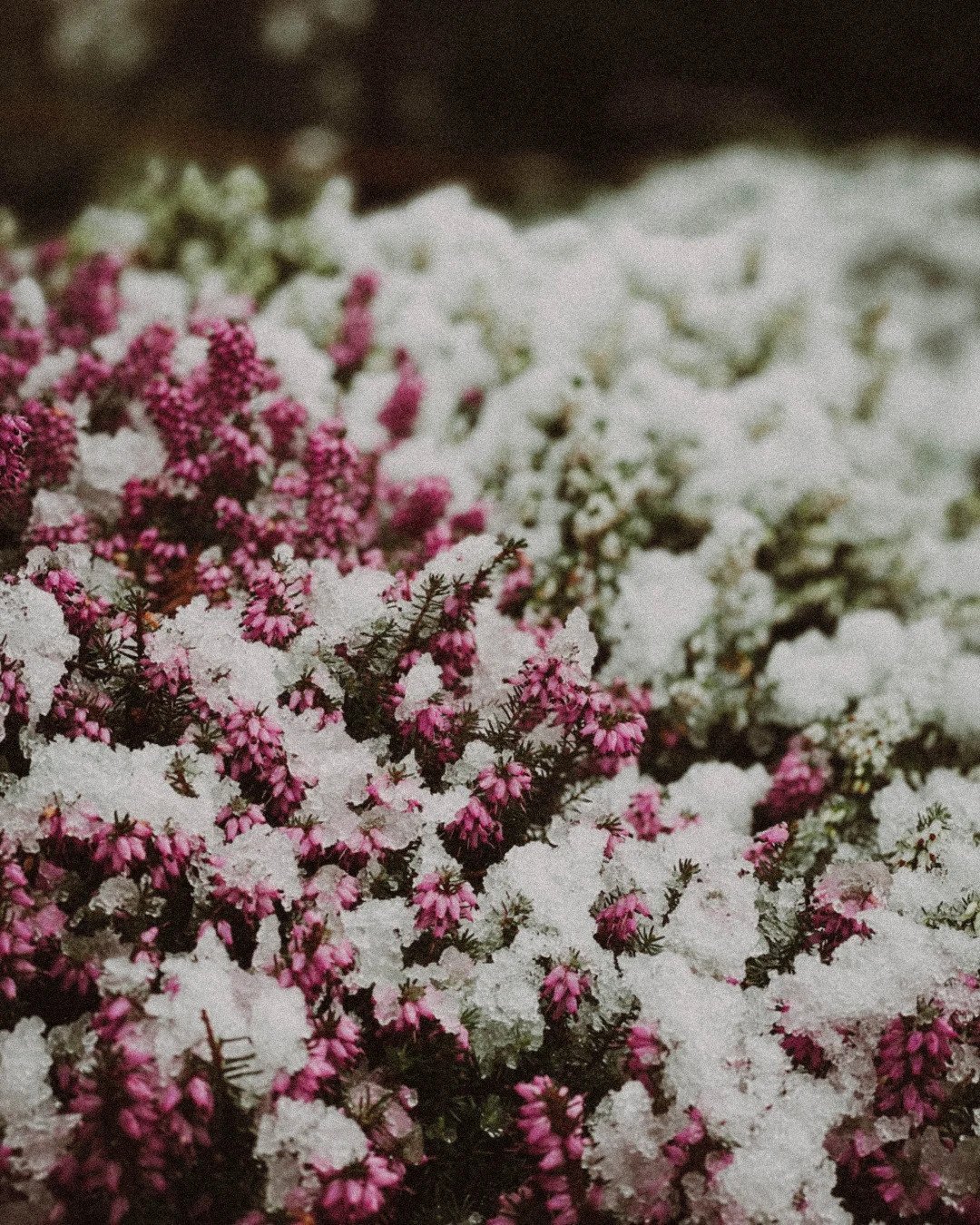The Church of the Oak
Early on Bride’s morn
The serpent shall come from the hole,
I will not molest the serpent,
Nor will the serpent molest me.
The Feast Day of Bride,
The daughter of Ivor shall come from the knoll,
I will not touch the daughter of Ivor,
Nor shall she harm me.
On the Feast Day of Bride,
The head will come off the ‘caiteanach,’
The daughter of Ivor will come from the knoll
With tuneful whistling.
The serpent will come from the hole
On the brown Day of Bride,
Though there should be three feet of snow
On the flat surface of the ground.
On the day of Bride of the white hills
The noble queen will come from the knoll,
I will not molest the noble queen,
Nor will the noble queen molest me.
This is the day of Bride,
The queen will come from the mound,
I will not touch the queen,
Nor will the queen touch me.
Cill Dara
In the winter of 2023 I went on a personal pilgrimage to Cill Dara, Co. Kildare. I was accompanied there by my fiancé. We came to pay hommage to St Brigid’s Well, and to visit the Eternal Flame that is kept burning for Her in the Solas Bhríde Centre. The long walk also took us to the Wayside Well – the hidden, pre-Christian waters, sacred to the Goddess over the Saint. I was able to light my fire to Hers. I was able to bathe my hands and bless my tools in the water. I was able to collect ashes from the Imbolc pyre, and pluck snowdrops and daffodils from Her garden. I brought back some of Her light, to hold and share as is seen fit.
One thing I particularly learned, was that I did not need to be in Ireland, or from Ireland, even, to have a meaningful, fulfilling, and authentic relationships with the gods and spirits who I have chosen and the gods and spirits who have chosen me. The land there taught me that much : They are with me everywhere. Somehow, even as an expat, I had not been able to fully integrate this lesson: it had never fully dawned on me, and I harbored some vague imposter syndrome about the situation, seeing it as an impediment – until now. Now I can recognize this as the wealth it is, the richness it brings. Home, I was told, is wherever I decide it to be. As I carry my ancestors and heirs within me, so too am I a bridge, a vessel, a crucible. My body is the temple, my bones the land, my blood the waters, my heart the fires – and my soul the bejeweled shrine, where faith is churned.
Flamekeeping
I was born in the heart of Brighid’s own season. My teacher taught me that there is little in the way of our magic which does not flow back to Her, and traced its lineage back to the healing hands of the goddess.
Four years ago, I decided to join a formal Brighidine organization to tend to Brighid’s flame. Being a Flamekeeper is a way for me to honour Brighid in an intimate capacity while also inscribing myself more broadly into the practices of an ongoing community. The goddess has tended the flame for me, within me, for a long time, and in more ways than one. This is just one small way of returning the favor to Her. I single-handedly cannot think of a devotional act that is more profoundly meaningful to me than this one. The principle is rather simple really… Working within a Cill, one is assigned a shift one particular day over a cycle spanning 20 days. From the first day up to the 19th, Brighid’s flame is lit, and then « passed » from one member’s shift up to the next. A shift lasts for 24 hours from sundown to sundown, time during which I am responsible for tending the flame, taking care of the fire, making sure it does not extinguishes, and delivering it safely from the dark of night to the light of day. I was ascribed Day 10 – you could choose if you wished, but I preferred to leave it to chance, for I figured I would be written for when and where there was most need for it. On the 20th day, Brighid is said to tend Her own fire Herself, after which day the cycle repeats itself. I could go on and on about the mythopoetical symbolism thereof – or on how deeply sacred, how achingly beautiful, how profoundly soulful the practice has proven to be. I make a ceremony of it, complete with music, prayers, songs and offerings. It matters to me that the ritual is repeated, that it is an ongoing commitment and not just a one time event.
Imbolc : Eternal Flame, Undying Fire
At the altar – dairy produce : fresh cream, whole milk, a fat piece of yellow butter. Bread and cheese. Honeyed whisky. Sained water blessed with gold and silver, a pounding heart, and a bated breath.
The whole period stretching from Imbolc to the Spring Equinox is intimately tied to rites of fire and water – rebirth, renewal, healing, transformation, the blessing of seeds and the preparation of the garden, the awakening of the land, and to rites involving snakes, eggs, healing waters, and of the gods and ungods in my court that have connexion to and preside over all of the above. The symbolic, thawing and transformative progression from fire (Imbolc) to water (with the Winter Releasing ceremony at the Spring Equinox), echoes the cosmological principle of Fire-In-Water as higher / divine inspiration in Gaelic / Gaulish cultures, understood as « that which breathes life into » – imbas forosnai. Fitting also, for a land that is rising from its winter sleep, for the snakes that are roused and called to start mating and shedding their skin, for the rivers (snakes of the land themselves) gorging themselves with the fresh waters of melted snow, for the last burns of the frost and the first of the sun. In the truth of dual opposites is an exercise in balance, in temperance – the knowing that winter contains the glowing embers of summer, and that in ice and frozen wells is hidden the secret burn of the cold. The dual concept of Fire-in-Water and imbas forosnai are interconnected realities, a deeply sacred cosmological principle relating back to powers of profound creation, of inspiration. Poetic and prophetic inspiration have little difference in a Gaelic worldview because both are performative gestures; iteration and utterances are breathing life into reality, shaping it: they are, quite simply, divine inspiration; the “tongue of truth aflame”, knowing things beyond one’s previous knowing, being, as my teacher put it, the universe speaking through itself to itself. It comes as a crown, and it is how we know Brighid to be the High One, why we climb up and look up and light flames that reach up, why our inspired self is, indeed, our highest self.
My statue of Brighid has developped the beloved verdigris patina of bronze where She has been oiled over and over again, like an ornamental shield – details of the goddess’ face and attributes fading away under polished devotion, melted reverence. Her rising Sun-crown. Her brow. Her belt. Her feet. Her sheaf. Her cross. Her sword. Her anvil. And – Her hand – the palm open always, holding the undying flame.
I recognize She of the White Palms in the rising light of the winter sun. I recognize Her in the white of milk and the gold of honey, in the sting of the bee, in the red of the furnace. I recognize Her in the fire She imparted to me – fire in the head, fire in the heart, fire in the hands. I recognize Her in the miracles I work. I recognize Her in the green of the land. I recognize Her in the safety of the hearth. I recognize Her in the burning fever cooled by gentle hands. I recognize Her in blossoming trees. I recognize Her in the body warmth of my lover’s skin. I recognize Her in the Snake that coils within, without. I recognize Her in the cauterizing edge of the blade. I recognize Her in the principle that sometimes to heal is to harm and to harm is to heal. I recognize Her in the salt of mourning tears. I recognize Her when She takes me Home – and I say Her name. My gentle foster-mother, my beloved Brighid.
Moch maduinn Bhride,
Thig an nimhir as an toll,
Cha bhoin mise ris an nimhir,
Cha bhoin an nimhir rium.
La Feill na Bride,
Thig nighean Imhir as a chnoc,
Cha bhean mise do nighean
’S cha dean i mo lochd.
La Fheill Bride brisgeanach
Thig an ceann de in chaiteanach,
Thig nighean Iomhair as an tom
Le fonn feadalaich.
Thig an nathair as an toll
La donn Bride,
Ged robh tri traighean dh’ an
Air leachd an lair.
La Bride nam brig ban
Thig an rigen ran a tom,
Cha bhoin mise ris an rigen ran,
’S cha bhoin an rigen ran rium.
An diugh La Bride,
Thig an righinn as an tom,
Cha bhean mise ris an righinn,
Cha bhean an righinn rium.



















